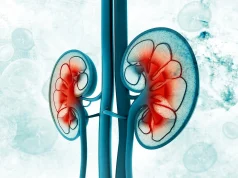Only lupus anticoagulant, combined thrombophilias are risk factors in patients with stage-5 CKD
WEDNESDAY, Dec. 13, 2017 (HealthDay News) — For patients with late-stage renal disease, the presence of lupus anticoagulant and combined thrombophilias are risk factors for the development of calciphylaxis, according to a study published online Dec. 13 in JAMA Dermatology.
Allison S. Dobry, M.D., from Massachusetts General Hospital in Boston, and colleagues compared the hypercoagulability status of patients with calciphylaxis and with renal disease with that of a matched control population. Thirty-eight patients with a dermatologic diagnosis of calciphylaxis and with concomitant chronic kidney disease (CKD) were included as cases and matched by age, sex, and race with 114 controls.
The researchers observed significant associations for lupus anticoagulant (48 percent positive in cases versus 5 percent in controls), protein C deficiency (50 versus 8 percent), and combined thrombophilias (62 versus 31 percent) with calciphylaxis among all patients. Only lupus anticoagulant (53 versus 0 percent) and combined thrombophilia (63 versus 8 percent) remained significantly associated with calciphylaxis in a subanalysis of patients with stage-5 CKD. Only lupus anticoagulant (50 versus 6 percent) and protein C deficiency (46 versus 0 percent) remained significantly associated with calciphylaxis in a separate analysis of warfarin-unexposed patients.
“Clinicians should be aware of these associations in patients with impaired kidney function and may consider increased screening and appropriate anticoagulation treatment to reduce the risk of calciphylaxis development,” the authors write.
Copyright © 2017 HealthDay. All rights reserved.








